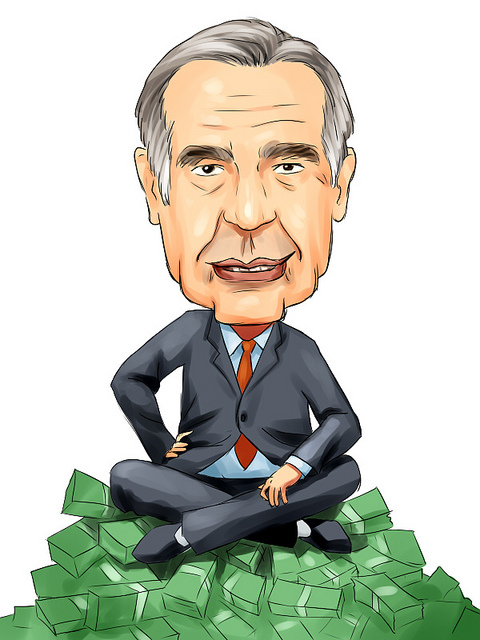U.S. stocks are showing gains early on Wednesday afternoon, with the Dow Jones Industrial Average (DJINDICES: ^DJI) and the S&P 500 (SNPINDEX: ^GSPC) up 0.54% and 0.66%, respectively, at 12:50 p.m. EDT. Share of American International Group Inc are outperforming, up 3.73%, on the back of billionaire investor Carl Icahn's disclosure that he has taken a "large position" in shares of the insurer.

Billionaire investor Carl Icahn. Image source: Insider Monkey, republished under CC BY ND 2.0.
Sometimes it take someone drawing loud attention to something for it to become obvious. That is what legendary investor Carl Icahn is surely counting on in penning an open letter to AIG's CEO, Peter D. Hancock, excoriating him for a "'wait and see ... for years' strategy void of decisive leadership." Ever constructive in his criticism, Icahn puts forward an alternative:
As a result [of this strategy] AIG consistently trades at a substantial discount to book value. It is a "no-brainer" that the simple act of splitting this company up will greatly enhance shareholder value.
The first of those two observations is clear to all, and has been for some time. In fact, AIG's shares have not traded at a premium to their book value since 2008!
The comparison with its peer group is no kinder. Over the past five years, according to data from Bloomberg, AIG shares have, on average, traded at a 54% discount to the average price-to-book value multiple for its peer group of North American property and casualty insurers (current discount: 50%).
When you narrow the peer group from 30 companies down to the 10 best comparables, the current discount remains substantial:
|
AIG Multiple (Discount) |
"Best Fit" Comparable Group Average | |
|---|---|---|
|
Price-to-book value multiple |
0.79 (30%) |
1.13 |
|
Price-to-book value multiple (ex-AOCI*) |
0.90 (27%) |
1.23 |
*Accumulated Other Comprehensive Income. Source: Bloomberg.
(This phenomenon is not restricted to the price-to-book value multiple, either: On the basis of price to next 12 months' earnings, AIG shares' average discount to the company's peer group over the past five years has been 18% (current: 28%)).
Recall that the price-to-book value can be expressed as:
P/ BV = ( ROE - g ) / ( k - g )
where ROE is the return on equity, g is the long-term growth rate in dividends, and k is the company's cost of equity.
If the ROE is greater than the company's cost of equity, shares ought to trade at a premium to book value (i.e., with a price-to-book value mutliple greater than one); otherwise, they will trade at a discount.
The bottom line is that AIG needs to lift its return on equity, which, at 6.70%, trails the average for its peer group by a full percentage point (the gap with the peer group median is even wider).
Would a breakup enable AIG's three separate businesses to raise their returns? That's more than likely. One of the levers AIG has in this regard is costs (which are currently higher than its peer group), and there is good reason to believe smaller entities could operate more cost-efficiently.
Several years ago, an academic paper showed that the "Buffett pop" in a company's shares once it was made public that Berkshire Hathaway had become an investor was not large enough to eliminate the opportunity to earn excess returns by piggy-backing on Buffett's investment.
I suspect that today's "Icahn pop" in AIG's shares still leaves room to profitably ride this extraordinarily successful investor's coattails.